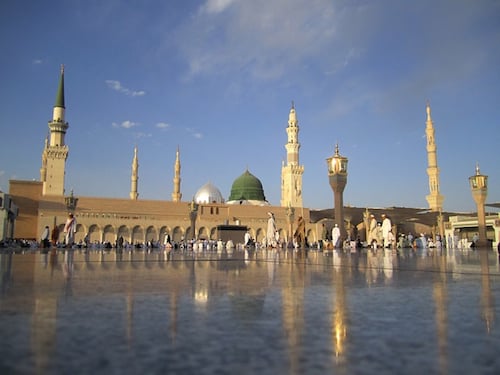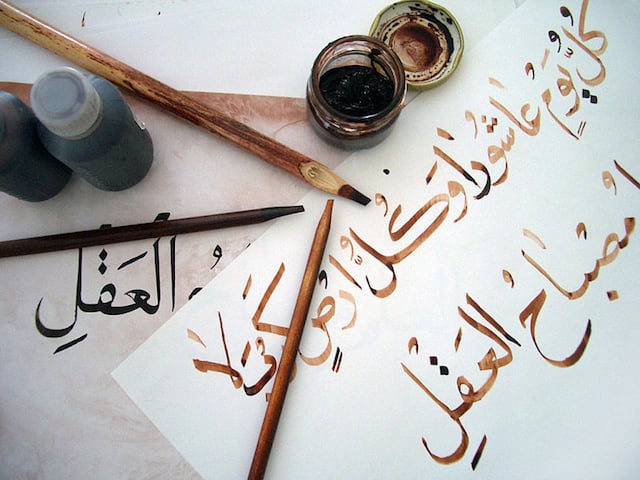9 Surprising Facts About the Arabic Language
With over 200 million native speakers, Arabic is the sixth most-spoken language worldwide. It’s also the official language of 22 different countries throughout the Middle East, Europe, and Asia. Yet despite its prevalence, Arabic isn’t commonly taught as a foreign language, and most English speakers know quite little about it. For example, did you know that different dialects of Arabic can be so distinct that speakers can’t understand each other? Or that its alphabet contains no capital letters? Keep on reading to learn more about the top-spoken language in the Middle East.
 Image via Pixabay
Image via Pixabay
1. Arabic has no capital letters.
There are no capital letters in the Arabic alphabet. Instead, quotation marks are used for emphasis.
2. Arabic is an official language in 22 countries.
Arabic holds official or co-official language status in the 22 countries that form the Arab League, a region that stretches from northwest Africa to southwest Asia. In total, over 200 million people speak Arabic as a native language (and about 100 million as a second language), making Arabic the sixth-most spoken language in the world.
3. Verbs come first and adjectives come second.
English is an SVO language, meaning that the typical word order is Subject, Verb, Object. Arabic, on the other hand, is a VSO language, meaning that the verb comes first. Thus, instead of saying “He threw the ball”, you would say “Threw he the ball”. Similarly, whereas in English adjectives come before nouns (e.g., “red car”), in Arabic, adjectives always come after. In Arabic, “red car” is السيارة الحمراء, which translates literally to “car red”.
4. Arabic is an official UN language.
Arabic is one of the six official UN languages, along with Chinese, English, French, Russian, and Spanish.
5. Related words are derived from the same three-letter roots.
Arabic has a rich vocabulary, and similar words are constructed from a root, which consists of three consonants expresses a general idea. Other letters and vowels are added around this root to create different words. For instance, the root K-T-B conveys the idea of “writing”. As such, kataba means “he wrote”, katib means “writer”, kutub means “books”, and maktaba means “library”.
 Image via Aieman Khimji / Wikipedia
Image via Aieman Khimji / Wikipedia
6. Arabic uses script, not print.
Our familiar Roman alphabet uses both print, in which each letter stands alone, and script, in which letters are connected (i.e., cursive). In Arabic, however, print does not exist; it is written entirely using script. This is why it may be hard for beginners to distinguish between individual Arabic letters.
7. Different dialects are markedly distinct.
In English, most dialects are mutually intelligible, meaning that British English speaker can easily understand an American English speaker. Arabic, on the other hand, is pluricentric, meaning that individual dialects are so distinct that speakers of different dialects often times can’t understand each other.
How good is your Arabic? Find out by taking our free online Arabic level test!
8. Arabic has heavily influenced many languages, including English.
You may not know it, but many Arabic words have found their way into the vocabulary of the English language. Cotton, magazine, and sherbet derive from قطن (qutun), مخازن (makhāzin) and شراب (sharāb), respectively.
9. Some of its punctuation is “backwards”.
Some Arabic punctuation marks, such as the question mark (؟) and the comma (،) are the inverse of what English speakers are used to.
You may have already known what Arabic writing looks like, but we bet you didn’t know its punctuation is different, too!
With its unique script, its frequent use of guttural consonant sounds, and its unfamiliar grammar, Arabic can be a hard language to learn for English speakers. If you want to learn the language for personal or work-related reasons, having the language explained by a professionally trained native Arabic speaker can be a huge help. Contact us to find out more about how we can help you master the complexities of the sixth-most spoken language in the world.


